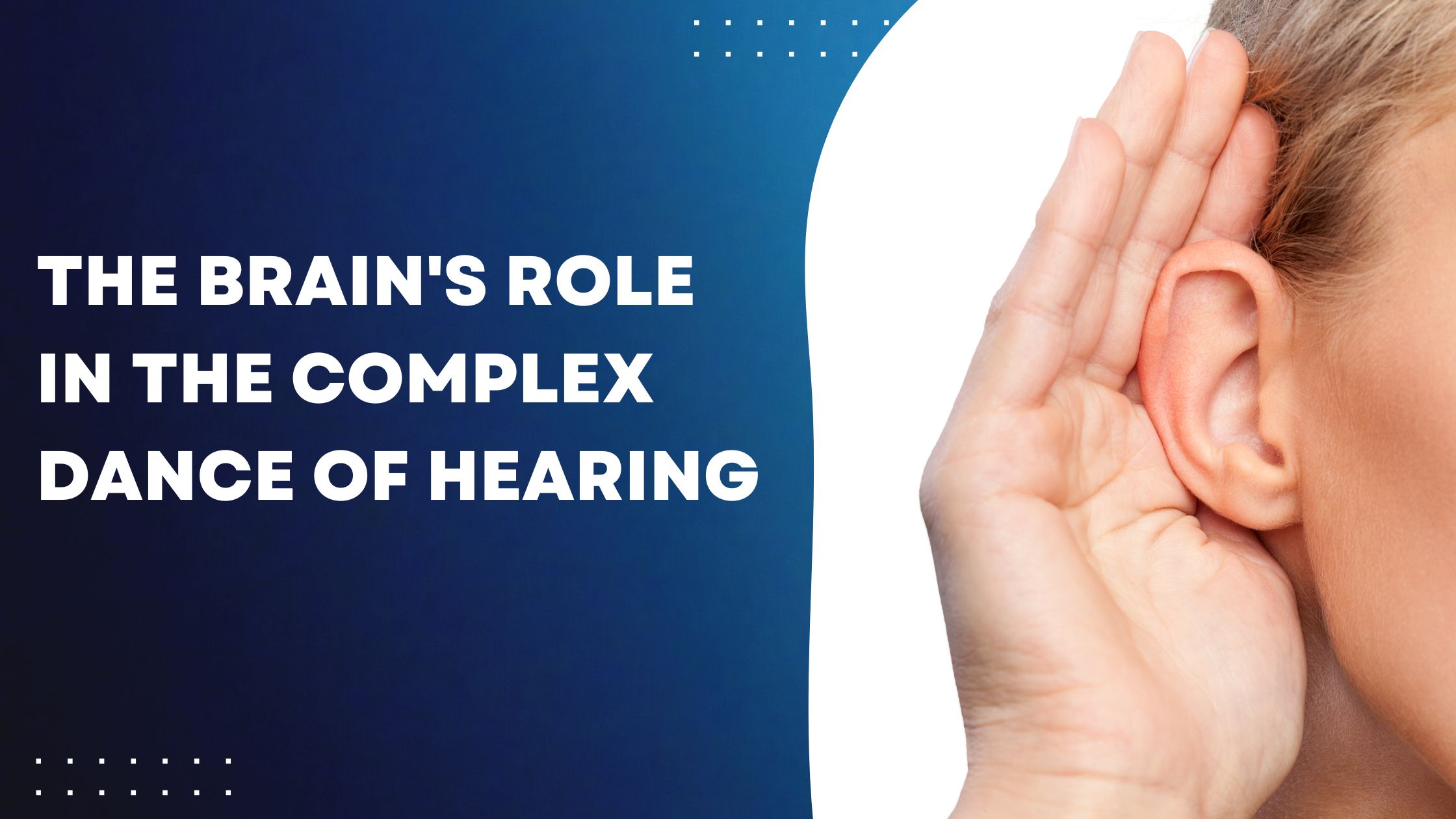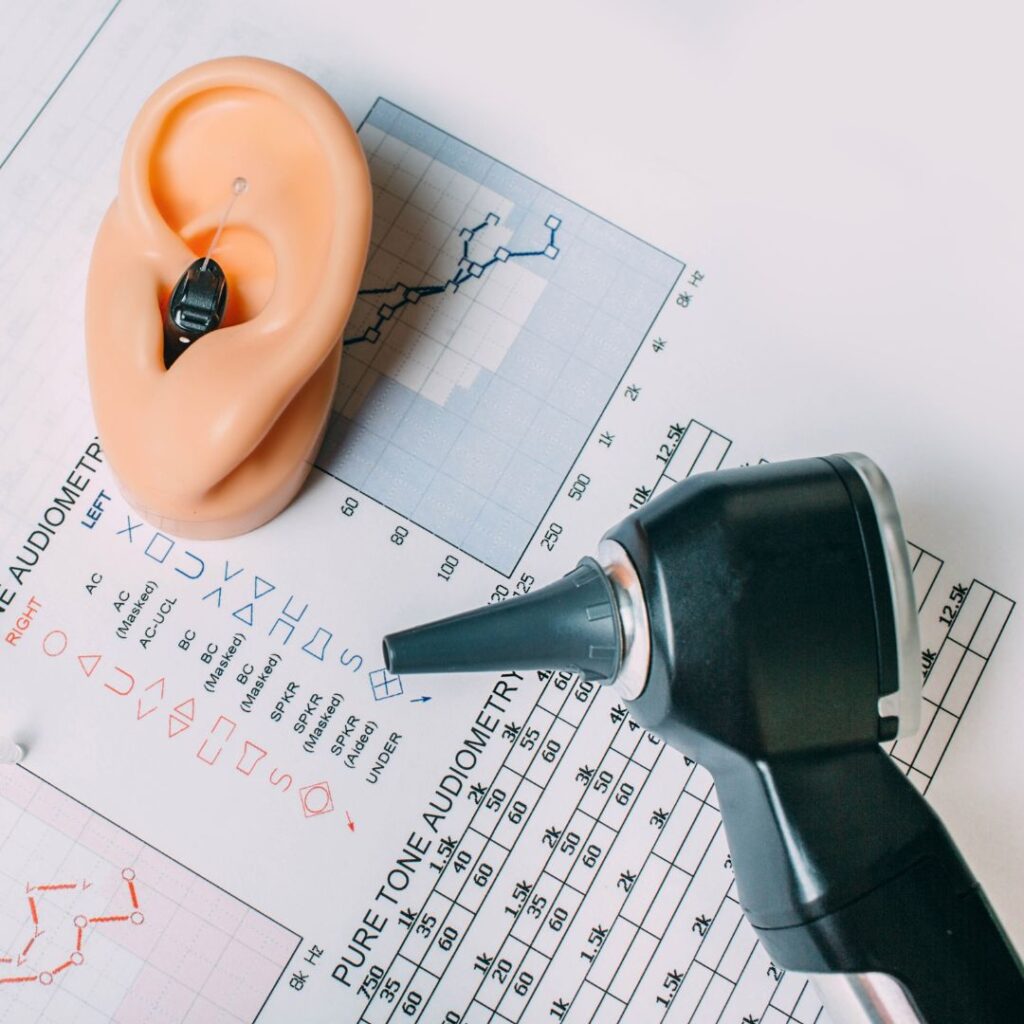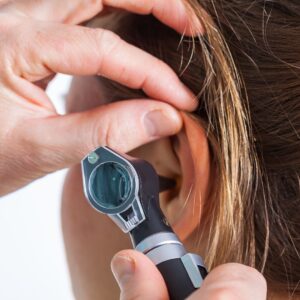

Introduction
The ability to hear sounds is a fantastic sense that gives us the ability to see the world. However, have you ever pondered how this intricate process gets started? Contrary to common assumption, hearing originates in the brain, not merely in our ears. We’ll explore the intriguing journey of sound in this blog article, from its creation to how our brain processes it.

The Path of Sound
Air vibrations are the starting point of the amazing adventure that is the path of sound. The eardrum vibrates in reaction to these sound waves as they pass through the ear canal. The cochlea, an organ filled with fluid in the inner ear, receives this vibration after passing through the middle ear bones. These vibrations are converted by thousands of hair cells in the cochlea into electrical signals, which are subsequently sent from the auditory nerve to the brain. This complex process highlights the amazing intricacy of the auditory system by enabling us to notice and understand the vast tapestry of sounds that surround us. our eardrums and setting off a chain reaction in our auditory system.
The Brain's Cochlea Gateway
The cochlea converts mechanical vibrations into electrical impulses that the brain can comprehend, acting as the brain’s entryway to the auditory world. This spiral-shaped organ, which is housed within the inner ear, is a marvel of biological engineering. It is made up of hundreds of tiny hair cells that are responsible for detecting sound waves and translating them into nerve impulses. These hair cells are stimulated by sound waves as they pass through the cochlear fluid, which starts a series of electrical signals that are sent from the auditory nerve to the brainstem. At this point, the brain starts the complex process of decoding these impulses, understand the diverse range of sounds that are all around us.

The Brain's Role
The brain plays a very amazing function in the process of hearing. An elaborate network of neurons gets activated in the auditory cortex upon receipt of electrical impulses from the cochlea. This part of the brain interprets the frequencies, amplitudes, and temporal patterns of these signals with incredible speed and accuracy. In addition, the brain is involved in more than just processing sounds—it actively filters out background noise, recognises speech patterns, and even detects the subtle emotional overtones in sounds. Our ability to sense and interpret sound is made possible by the intricate interactions between the auditory cortex and other brain regions, which deepens our awareness of the environment.

Challenges and Solutions
A number of variables, such as ageing, loud noise exposure, and underlying medical disorders, can lead to hearing challenges. These difficulties can show up as cognitive decline, hearing loss, or trouble interpreting speech in noisy surroundings. On the other hand, technological developments present encouraging answers to these problems. Hearing devices with advanced signal processing algorithms can improve voice clarity and selectively boost sound to assist those experiencing hearing loss. For people with severe to profound hearing loss, cochlear implants offer a remedy by directly stimulating the auditory nerve instead of damaging the inner ear tissues.
Conclusion
The brain is the starting point for the complicated sensation of hearing. The way we see and comprehend the world around us is greatly influenced by the auditory cortex, which processes sound waves in a complex manner. We can continue to appreciate the beauty of sound for many years to come if we comprehend this process and take precautions to preserve brain health.